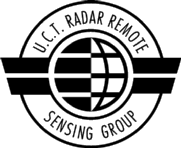

Back to list of Group's MSc Theses
Abstract:
This dissertation focuses on the integration, implementation and testing of the X-Band (9.3 GHz) South African Synthetic Aperture Radar project (SASAR II). The SASAR II system was divided into three main subsystems for design and implementation at M.Sc. level. The three main systems were the transmitter and frequency distribution unit (FDU), the receiver and the radar digital unit (RDU). Although all subsystems are separate units, the design process was a collaborative effort.
The purpose of a synthetic aperture radar (SAR) is to provide high resolution images of extensive areas from airborne platforms operating from long ranges. The SASAR II project was born out of the success of its predecessor, SASAR, which was a VHF SAR commissioned in 2000. The SASAR II system is a wide bandwidth X-Band radar system with a high resolution of 2x2m. The processed resolution of the SASAR II system is enhanced through design improvements of the transmitted bandwidth, pulse coding and the overall system coherency.
The purpose of this dissertation is to verify the original design specifications of the system and to test its integrity when all subsystems are combined. The critical parameters for monitoring and testing are the power budget levels for each RF unit. An insufficient input drive for a mixer may result in a null output. Conversely a high input drive will result in the saturation of the device and the generation of intermodulation products and higher conversion losses.
Testing of the digital pulse generator (DPG), which is part of the RDU, showed a drop in the specified output power of 10 dB. The power budget calculations made for the transmitter were made based on the input power of the DPG. The DPG unit also failed to provide adequate port to port isolation between the input trigger and the I & Q output channels. Spurious harmonics signals from the trigger resulted in aliasing with the IF frequencies. An extra filtering stage was added at the front end to isolate these harmonics.
The sensitivity time control (STC) and the manual gain control (MGC) form the final amplification/attenuation stages of the receiver unit. The combination of the two units results in final output signal amplitudes of between 2.15 dBm and 32.5 dBm. The specified maximum input power of the ADC is 10 dBm. The additional gain stages in the MGC would drive the ADC into saturation and possibly result in permanent damage. The testing of the receiver and the ADC was therefore limited to low power testing.
The complete system response closely matched that of the design specification. The sources of the spurious signals described in the previous dissertations were isolated and filtered out. This however required the use of pulsed RF measurement techniques, specifically regarding the use of the pulse desensitization factor (PDF). Since the tested signals have a PRF, the measurement equipment takes an average of the peak pulse power distributed over all the spectral components over a given PRI. The PDF therefore compensates for the drop in signal power.
Back to list of Group's MSc Theses
Abstract:
This dissertation covers the commissioning and testing of an aircraft’s constant frequency alternator as the power supply for the Blue Parrot radar.
The Blue Parrot is an X-band radar which forms part of the navigation and weapon-aiming system onboard the Buccaneer S-50 SAAF aircraft. The radar set uses a source of three-phase power at 400 Hz, which the constant frequency alternator can supply with the aid of certain auxiliary systems. The auxiliary systems include a prime mover, blower fan and a telemetering system. The prime mover has high starting currents which were reduced significantly by the use of a soft-starter.
During testing, the constant frequency alternator started overheating and a blower fan was selected based on its thermal requirements. Significant cooling of the constant frequency alternator’s case temperature was achieved by the use of a blower fan and shroud. The generator control unit monitors and regulates all parameters on the unit except for case temperature and blower fan pressure. A telemetering system was designed and built to monitor and display these parameters.
Back to list of Group's MSc Theses
This page was last updated in February 2009 (RL)
![]()